Your privacy choices
As described in our Privacy Policy, we collect personal information from your interactions with us and our website, including through cookies and similar technologies. We may also share this personal information with third parties, including advertising partners. We do this in order to show you ads on other websites that are more relevant to your interests and for other reasons outlined in our privacy policy.
Sharing of personal information for targeted advertising based on your interaction on different websites may be considered "sales", "sharing", or "targeted advertising" under certain U.S. state privacy laws. Depending on where you live, you may have the right to opt out of these activities. If you would like to exercise this opt-out right, please follow the instructions below.
If you visit our website with the Global Privacy Control opt-out preference signal enabled, depending on where you are, we will treat this as a request to opt-out of activity that may be considered a “sale” or “sharing” of personal information or other uses that may be considered targeted advertising for the device and browser you used to visit our website.
introduction
Mushroom cultivation is a fulfilling, science-meets-art process that invites you into the fascinating world of fungi. Unlike traditional gardening, growing mushrooms relies on creating the ideal environment for mycelium—the vegetative root system of fungi—to colonize a substrate and eventually fruit. This guide offers a step-by-step breakdown for beginners interested in small-batch, indoor cultivation using basic tools and supplies.
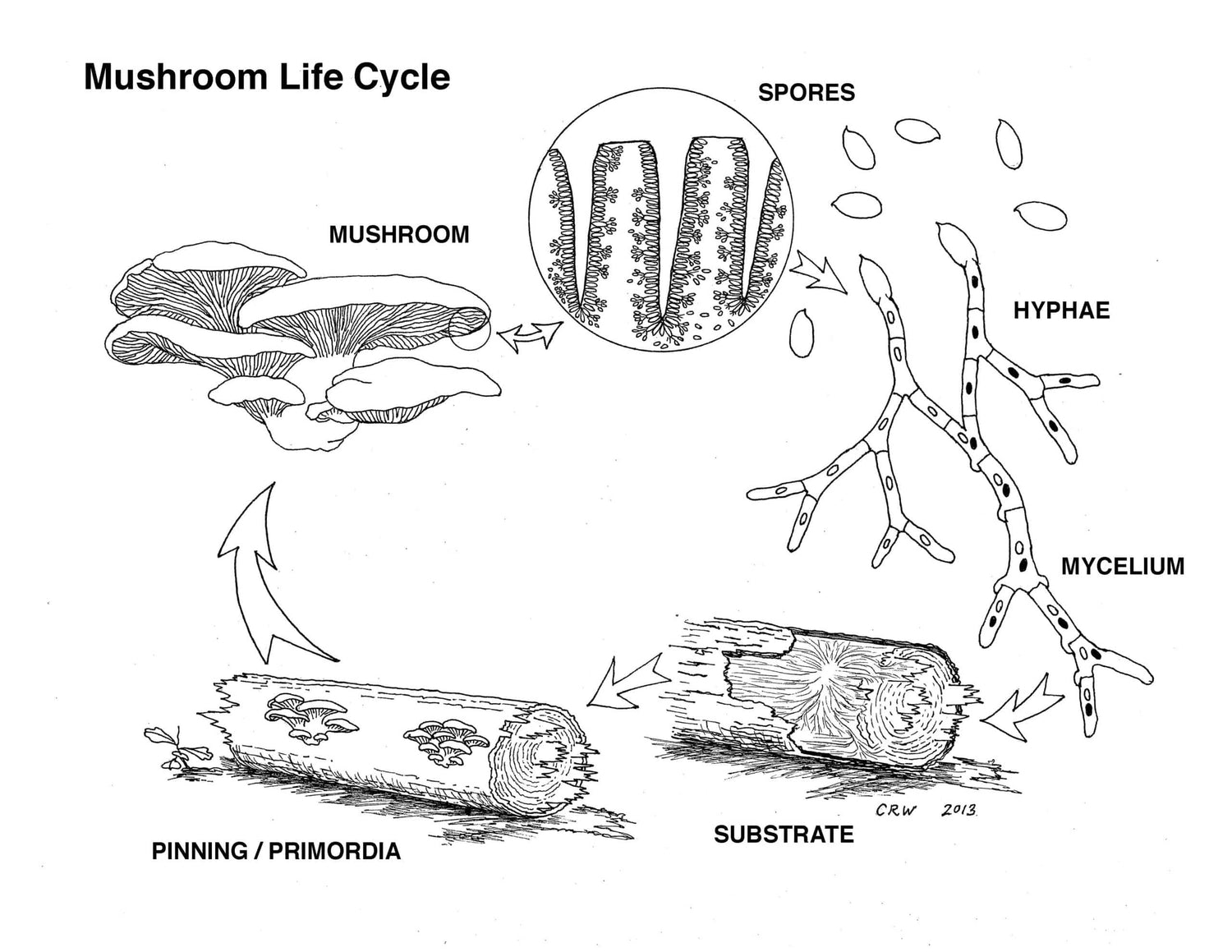
Step 1
Understand the Mushroom Life Cycle
Before starting, it's essential to understand the stages mushrooms go through. The basic life cycle includes:
- Spore germination
- Mycelial growth (colonization)
- Formation of primordia (pinning)
- Fruiting body development
- Spore release
In cultivation, most at home growers bypass spores and use mushroom mycelium i.e. Liquid Cultures or Grain spawn—a pre-colonized material—to speed up and stabilize the process.
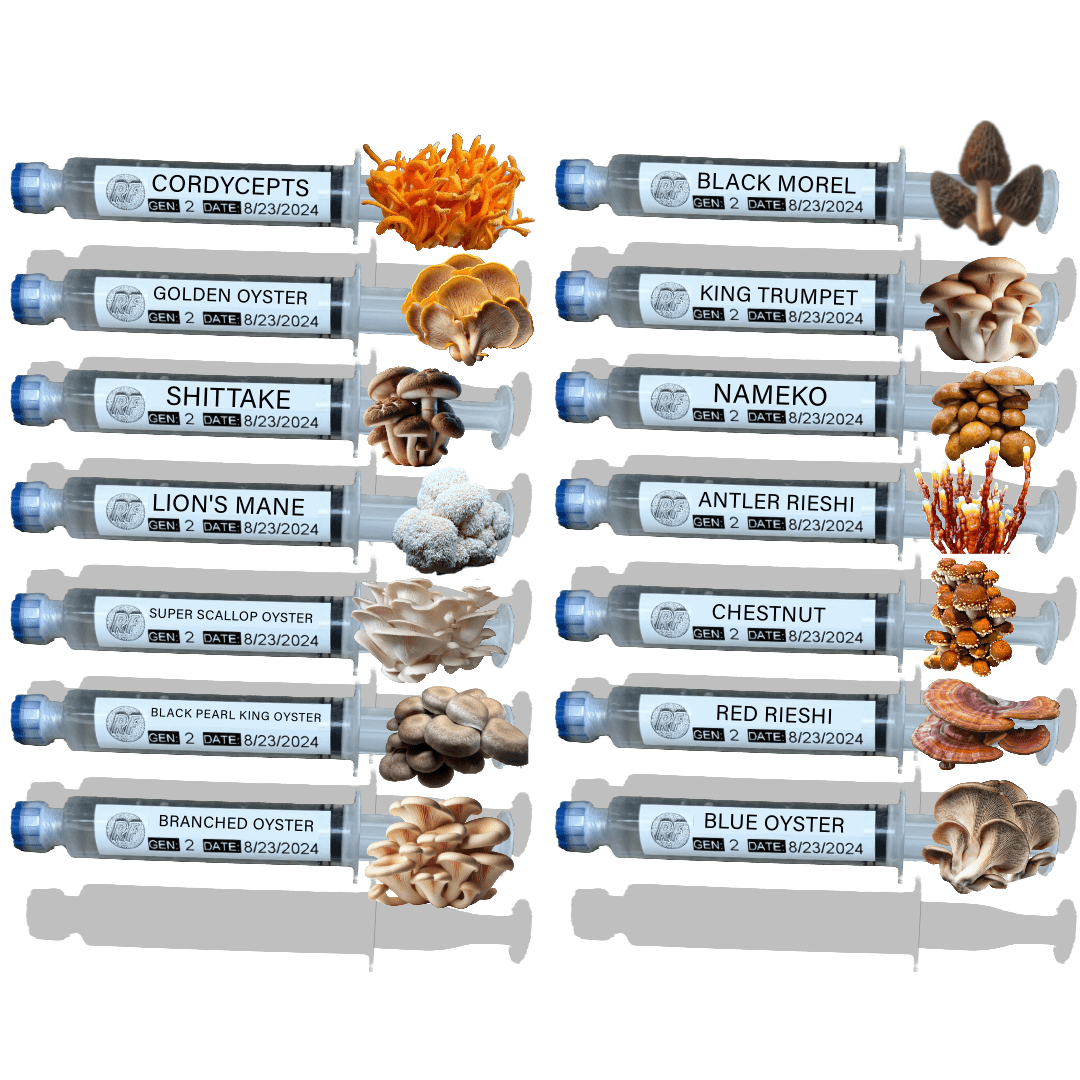
Step 2
Choose a Mushroom Species
Start with beginner-friendly species like:
Consider factors such as:
- Ideal temperature ranges
- Fruiting timeline
- Substrate compatibility
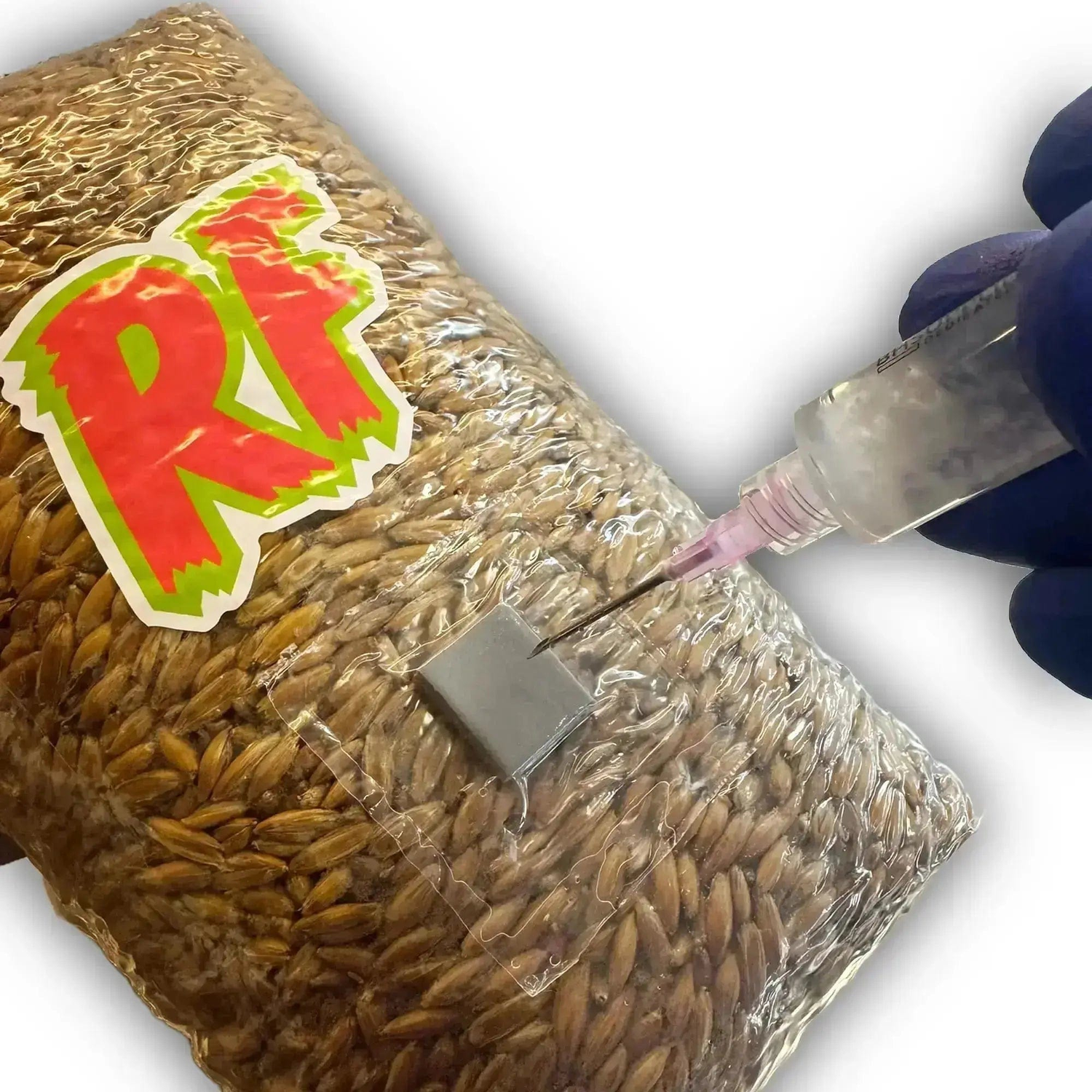
Step 3
Prepare or Purchase Mushroom Spawn
Mushroom spawn can be purchased ready-to-use or prepared at home using a sterile culture and grain. Most beginners purchase:
- Liquid culture syringes (inoculate sterile grain jars or bags)
- Grain spawn (already colonized with mycelium)
Always work with sterilized tools and surfaces to prevent contamination.

Step 4
Select and Prepare a Substrate
Substrate is the nutrient source your mushroom mycelium will colonize. Common substrates include:
- Pasteurized straw (great for oysters)
- Sterilized hardwood sawdust and soy hulls (ideal for Lion's Mane and Shiitake)
- Enriched coco coir and vermiculite blends (used in beginner tubs)
Moisture content should be around 60-65%. A good rule of thumb: squeeze the substrate in your hand—it should release a few drops of water, not a stream.
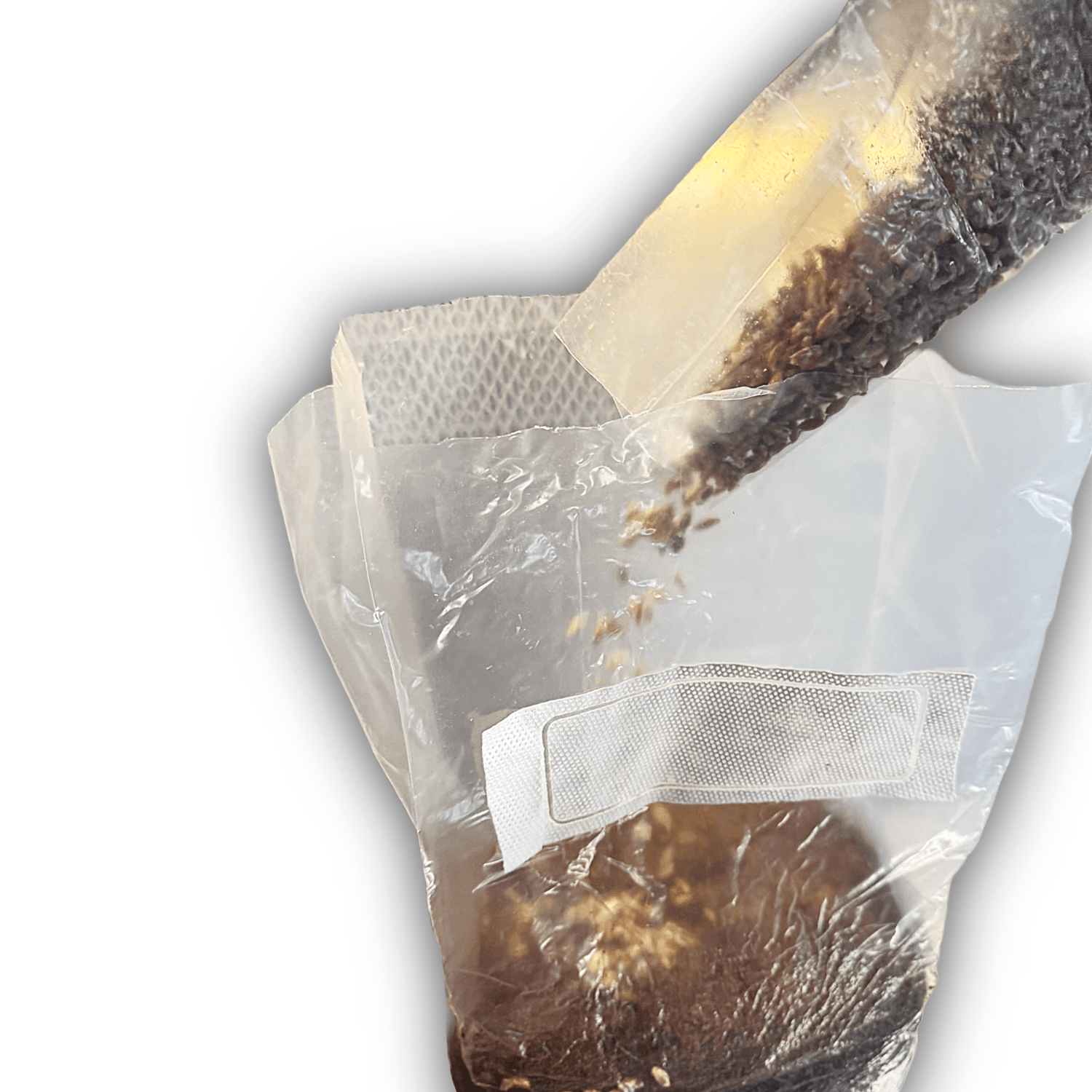
Step 5
Inoculate the Substrate
Once cooled and prepared:
- Transfer the substrate to a clean container (e.g., filter-patch bags or monotubs).
- Break apart the grain spawn and mix thoroughly with the substrate using gloved, sanitized hands.
- Seal the container with proper gas exchange (e.g., filter patches, micro-perforated lids).
Incubation conditions: 70-80°F in a dark space with no light and limited airflow for 2-3 weeks, or until fully colonized.
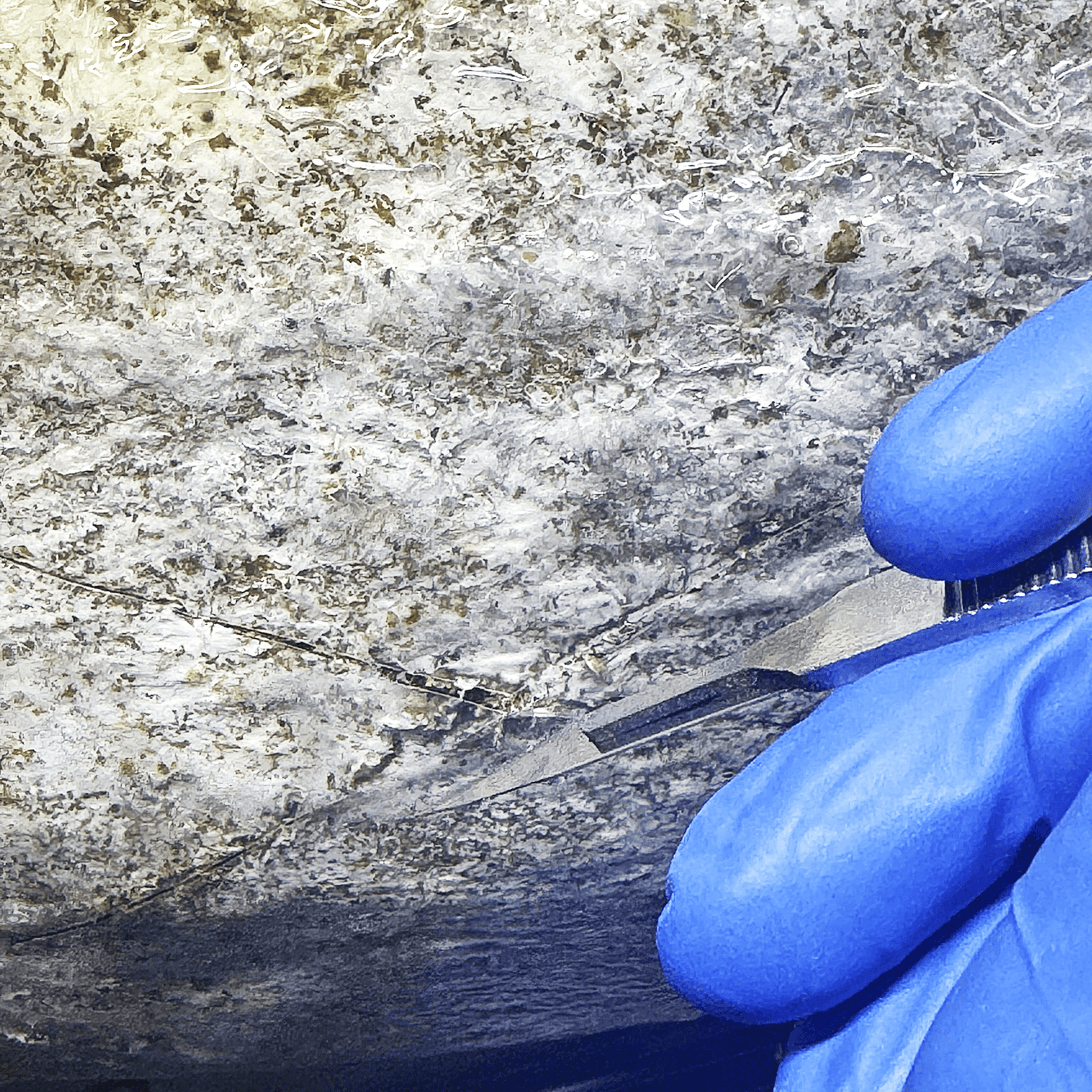
Step 6
Initiate Fruiting Conditions
Once the substrate is completely white and colonized:
- Introduce fresh air exchange by opening ports or loosening the lid on mono tubs or cutting the top off or creating slits for bags - each method is specifies and grows preference dependent
- Expose to indirect light (natural window light or 6500K bulb).
- Mist 1-2 times daily to maintain humidity (85-95%).
- Ideal fruiting temperature: 60-70°F depending on species.
Pins (baby mushrooms) should form within 5-10 days.
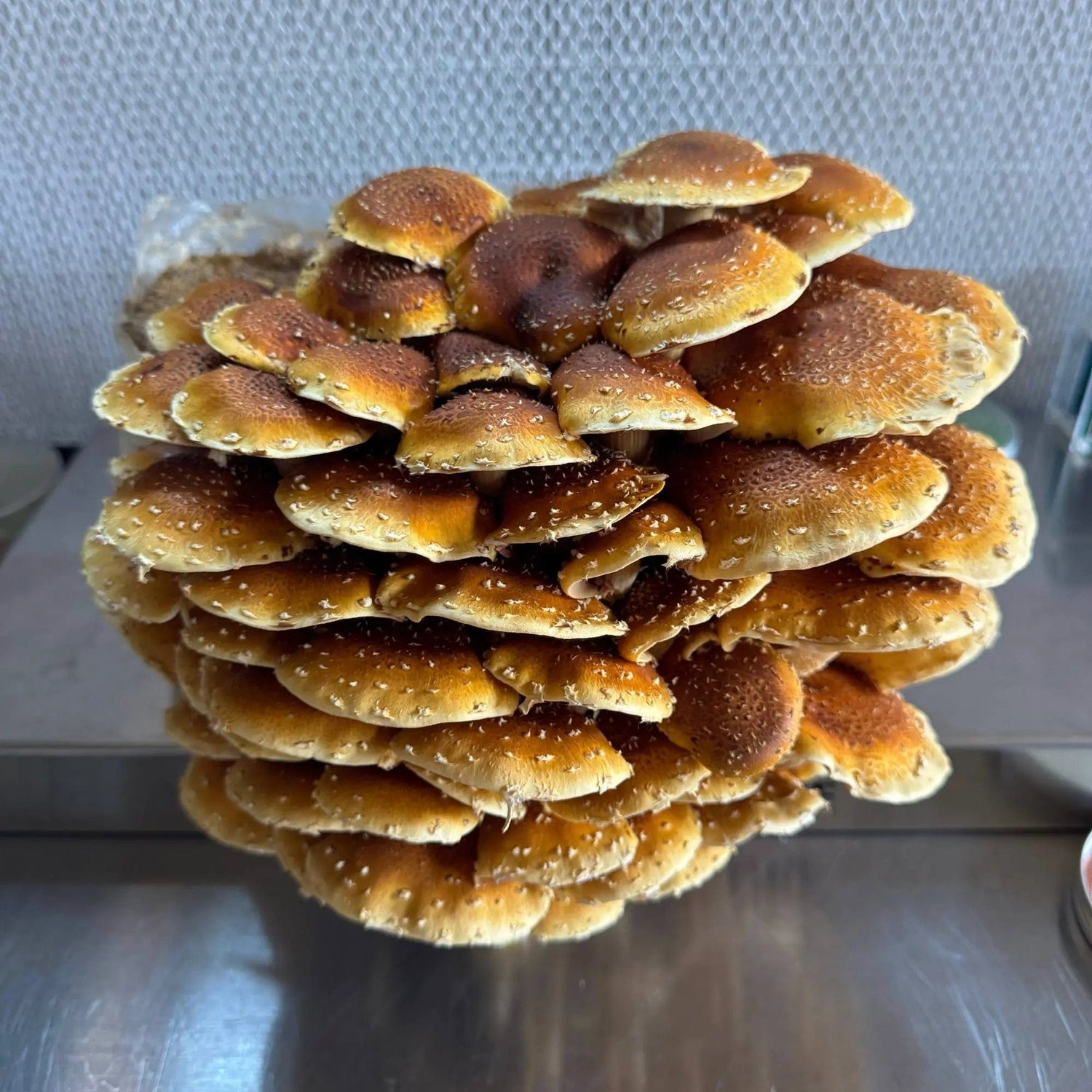
Step 7
Harvest and Maintain
- Harvest mushrooms by twisting and pulling gently or cutting at the base.
- Flushes (multiple rounds of growth) may occur every 7-14 days.
- Continue misting and maintaining humidity between flushes.
Spent substrate can often be added to compost or used outdoors for continued fruiting.
Tips for Success
- Keep everything as sterile as possible during inoculation.
- Use a hygrometer and thermometer to monitor your fruiting chamber.
- Be patient: each strain and environment can affect speed and yield.
- Keep a grow log to document your variables and results.
conclusion
Growing mushrooms at home is a blend of technique, observation, and appreciation for the natural world. This beginner’s guide provides a framework, but your success will come from curiosity, cleanliness, and consistency. Once you’ve mastered your first flush, you’ll be well on your way to exploring new species and more advanced methods of cultivation.

